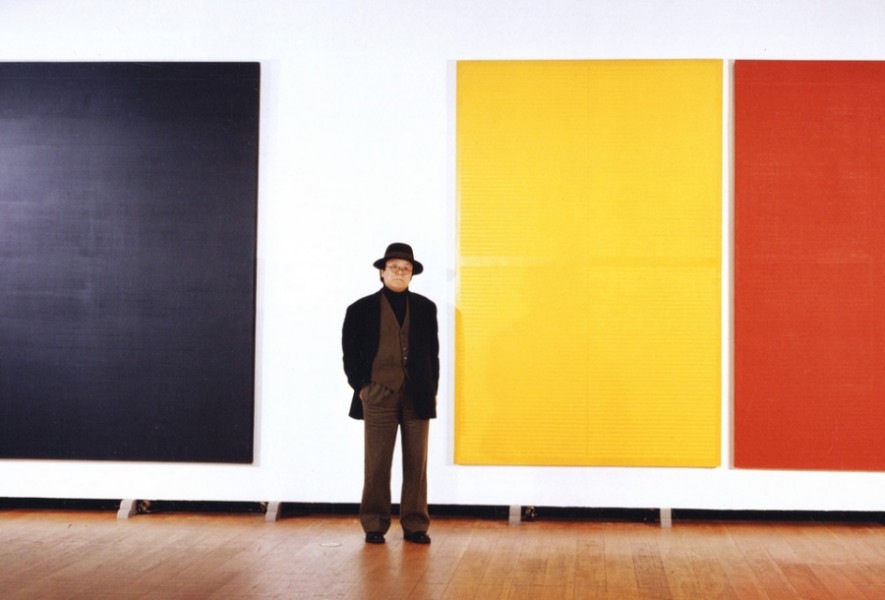RX&SLAG, Paris, is delighted to announce the representation of the work of KIM GUILINE (1936-2021), a pioneer of the Korean avant-garde and a key figure in the Dansaekhwa movement.
RX&SLAG is dedicating its Parisian space to this first exhibition, showcasing a dozen iconic paintings that delve into the concept of "consciousness of the surface." This exhibition offers the French public a unique opportunity to (re)discover the legacy of a remarkable artist deeply influenced by the dual Franco-Korean culture, whose last solo exhibition in France took place decades ago.
Early career: dominance of so-called "absolute" colors
Born in Kowon in what is now North Korea, Kim Guiline embarked for France after studying French literature in Seoul, where his family had migrated in 1950, just before the war. He was admitted to the studio of Roger Chastel at the École des Beaux-Arts and obtained his diploma from the Paris School of Decorative Arts. The art history courses taught by Jacques Thuillier at the University of Dijon introduced him to French paintings from the 17th century, particularly those of Poussin, whose reds, blues, and yellows would later influence his work.
The 1970s: beyond the perceptible
The paintings of Kim Guiline seek to push the boundaries of perception. Some are part of the Korean pictorial movement known as "Dansaekhwa," which means "one color" in Korean, although the artist never sought to belong to a specific artistic trend. He stated that his connection to painting was primarily intuitive, organic, grounded, and poetic, rather than conceptual. He saw himself as a plowman in the field of abstraction, working the paint like fertile soil, carving furrows in it to sow seeds of visions. His primary vocation was poetry.
He places great importance on light in his works, as it is inseparable from color. For the patterns in his monochromes, the artist drew inspiration from the wooden and paper panels of the sliding doors found in traditional Korean homes; however, these patterns also refer to the point and line, the minimal grammar of drawing. The diffused light filtering through the paper represents the light of his childhood, evoking memories of his homeland. This light permeates his inner vision, focused on the interplay of emptiness and fullness, presence and absence, and on the exploration of the "voluminous" nature of the world.
From 1985 onwards: bold colors
Around 1985, the artist expanded his monochromy to include colors. He explored bold colors such as red, blue, yellow, green, and brown. The colors were applied in successive layers using broad, fluid gestures, allowing each color to contribute its own nuance and vibration to the final hue of the monochrome work. It is a process of both the invisible and the visible. He sought to give substance and texture to light, which is always central to his work, through a play of absorption and reflection of color across the different layers. For him, a blue could be as warm as it is cool, and a yellow could be as cool as it is warm. In his works on paper, he used traditional Korean mulberry paper, applying fine layers of oil paint to achieve surfaces that are mostly matte, though sometimes glossy. For Kim Guiline, the surface he paints on can be compared to a living skin that captures the act of creation and absorbs the creative energy, which is released through the accumulation of paint layers.
Where to find his works?
Today, you can find Kim Guiline's work in the public collections of various museums, such as the National Museum of Modern Art in Paris, the CNAP (Centre National des Arts Plastiques), the National Museum of Modern and Contemporary Art in Korea, the Leeum Museum in Seoul, the Busan Museum of Art, and the Daegu Museum of Art.
